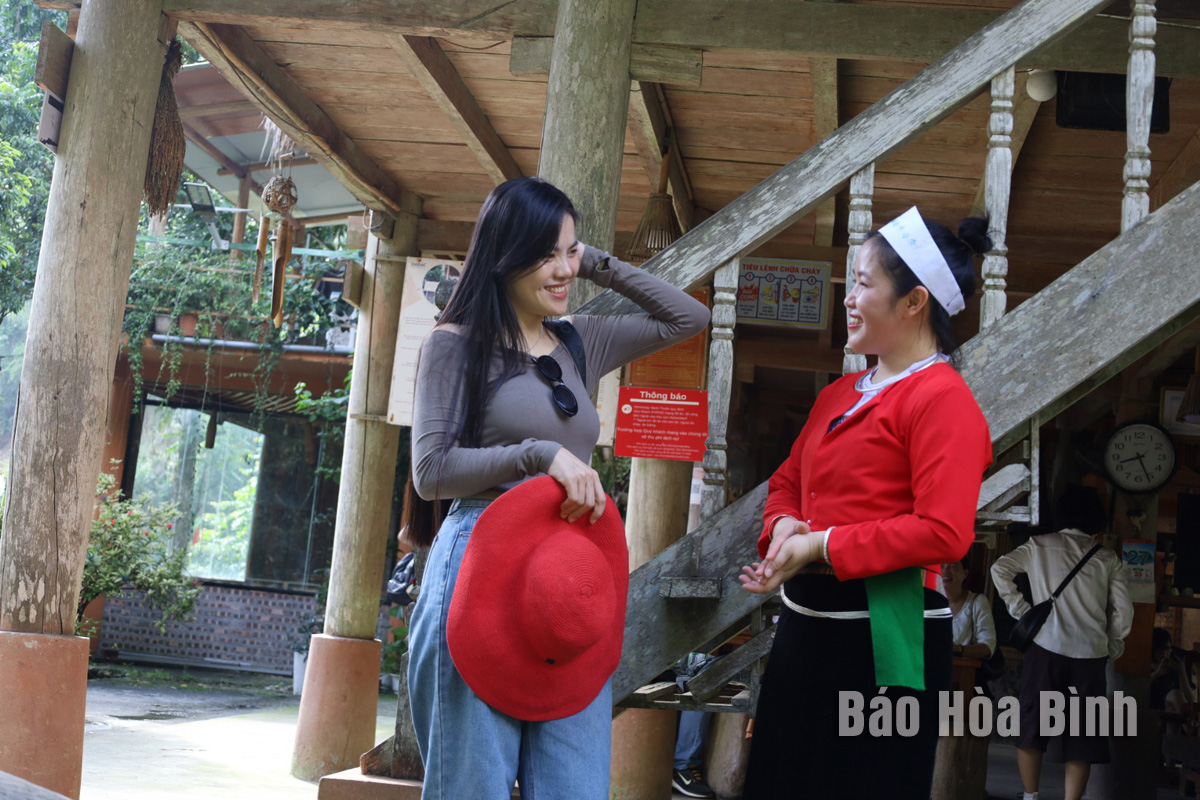
Hien Luong commune in Da Bac district is blessed with beautiful landscapes, thanks to its location besides a vast, picturesque reservoir with clear waters year-round. This natural advantage has allowed the local ethnic minorities to develop sustainable tourism, becoming a community tourism destination.

Tourists explore the culture of the Muong ethnic people during their visit to Ke village, Hien Luong commune, Da Bac district.
Since getting married, Dinh Quy Huu, owner of the Huu Thao
homestay in Ke village, has engaged in community tourism. Their homestay,
located by the Hien Luong bay and Ke stream, offers visitors a peaceful retreat
surrounded by nature. The homestay features a large shared room and three
private rooms, all designed in the traditional Muong ethnic’s architecture. The
minimalist yet clean decor ensures comfort while offering a truly local
experience.
After seven years of developing the tourism model in the
village, three families have joined, improving their facilities and service
quality. These homestays offer meals, accommodations, and various experiences
such as kayaking, swimming, campfires, and cultural performances. Local
cultural and tourism events held by the district have contributed to promoting
and growing the village’s community tourism.
Nguyen Huong Giang, a tourist from Hanoi, shared her
satisfaction with the experience, praising the stunning lake view, comfortable
accommodations, and delicious food, particularly the grilled fish. The water
sports activities provided quality family time, making the trip memorable.
Ke village, home to 115 Muong ethnic households, has seen
improvements in livelihoods since the development of the tourism model. The
local community actively preserves and promotes its cultural heritage, with
music groups and service providers contributing to local employment and income.
The tourism activities also help introduce and promote local specialties,
especially fish from the reservoir.
Across
the Hoa Binh lake area, community tourism is flourishing with activities like
village cultural exploration, kayaking, and swimming. The community tourism
model in Ke village, alongside other local destinations, offers visitors a
unique experience combining culture, nature, and adventure, making it a popular
stop for tourists exploring the Hoa Binh lake tourism area.
A diverse chain of eco-tourism and resort destinations concentrated in Hoa Binh city and the districts of Tan Lac, Da Bac, and Luong Son… Along with the launch of several key high-quality resort tourism projects, these developments have reshaped the landscape and enhanced the appeal of Hoa Binh as a travel destination.
Boasting diverse terrain, a mild climate, and rich natural resources, Cao Phong district is increasingly asserting its place on Vietnam’s tourism map, attracting both domestic and foreign visitors. The district is renowned for its stunning landscapes, majestic mountains, a crystal-clear hydropower lake, and the unique cultural identity of local ethnic groups.
With its pristine landscapes, unique cultural heritage of Muong ethnic minority, and an expanding range of visitor experiences, Tan Lac district of Hoa Binh has fast become a captivating destination for both domestic and international tourists.
Until now, Sung village in Cao Son commune, Da Bac district remains the only Dao ethnic community in Hoa Binh province to develop a community-based tourism model. Beyond its untouched natural landscapes, cultural identity serves as the cornerstone attraction for visitors.
Alongside the diverse cultural identities of the Kinh, Muong, Tay, Thai, Dao, and Mong ethnic people, Hoa Binh province is also renowned as the "capital" of the northwestern Vietnamese cuisine, offering unique and distinctive dishes. At festivals, during Lunar New Year (Tet), or on significant family or community occasions, special dishes are prepared, leaving a lasting impression on visitors.
A Phong Linh (Yellow Tabebuia) flower garden in Thang village, Thach Yen commune, Cao Phong district is currently in full bloom, drawing a large number of visitors.



